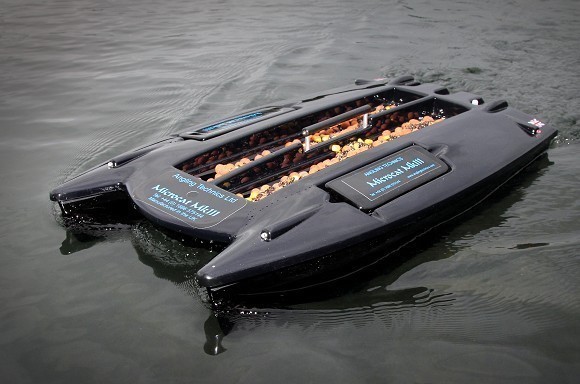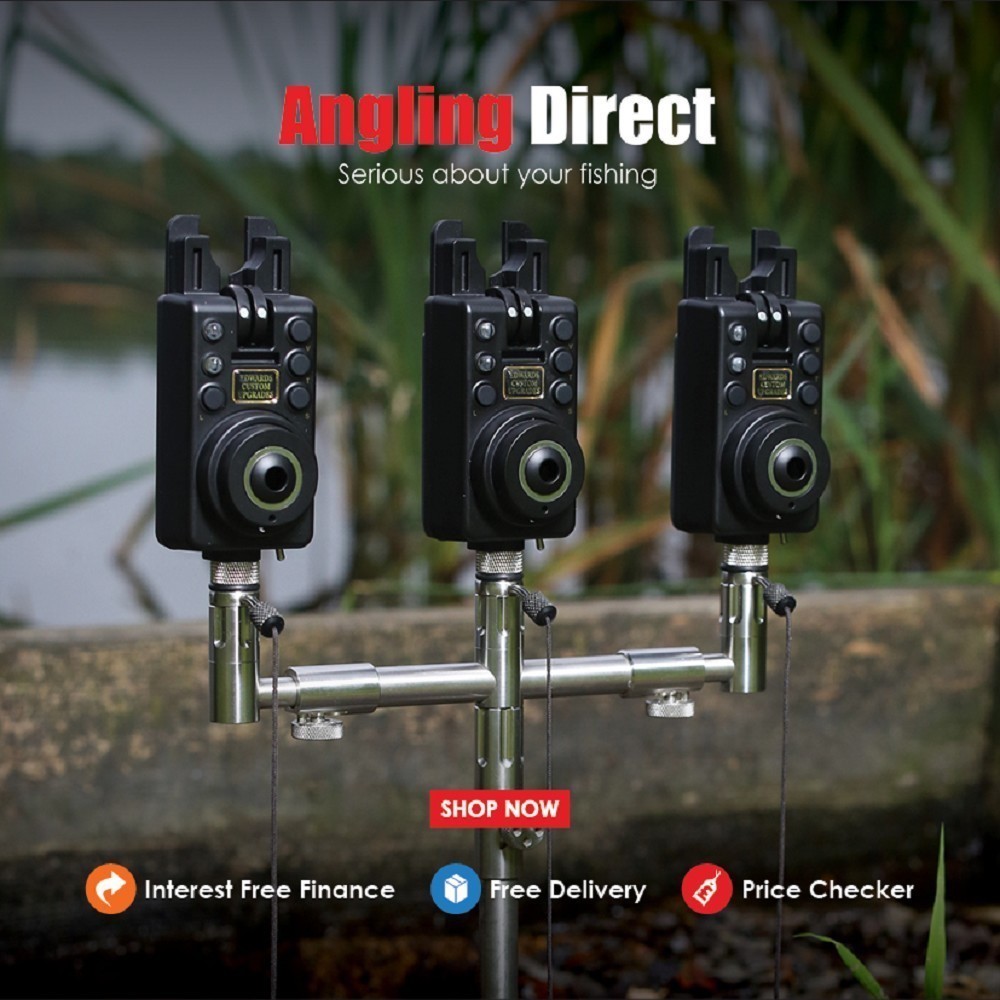
10 top tips to getting more from your bait boat
Tips, edges and tweaks to help you get more from your bait boat and catch more fish!
1 Fish on the fridges
With boats that have two hoppers, it’s possible to place a quantity of feed in one hopper and a single hookbait rig in the other. Once the boat is in position out in the lake, the feed can be dispatched in one go – in much the same way as any other boat user and in the way the carp will commonly come across a baited area. The hookbait can then be taken a little way over the baited spot, say a rod length and dropped. Hookbaits fished on the fridges of the main bait is something the carp won’t generally see on waters pressured by bait boats and in turn can be a real edge.
2 Giant PVA bags
Obviously one of the main advantages of any bait boat is the fact that you can deposit your hookbait and feed in exactly the same spot. Using large solid PVA bags enhances this benefit even further as it will not only utilise smaller fishing spots than normal, but you can also ensure the rig is tangle free. If a mixture of micro to medium sized pellets and ground bait is used to fill the bag you can even create your own spot within low lying weed. As the compact bag bursts open the contents push aside light weed and cover lakebed debris to present the hookbait perfectly.
3 The Parachute bag
Okay, now lets look how PVA bags can be given an edge with the ‘Parachute Bag’ method. Firstly one or two PVA nuggets are attached to the hookbait. This is then lowered into the bag, which is filled with larger pellets to ensure air pockets are trapped. The bag is only filled to cover the hookbait and last quarter of the hooklink. When the bag hits the lakebed, initially it floats suspended above the lead. As the PVA dissolves the contents fall, leaving the hookbait suspended before it slowly falls onto the pellets, guaranteeing the hookbait's perfect position above the feed.
4 Spreading the bait
When carp become used to getting hooked on any one thing a lot, it can pay to take your presentation in another direction. Across water’s where bait boats are permitted this is most commonly when the carp become cautious of tightly baited spots. Spreading the bait is the answer, but not easily achieved when all the bait is dropped in one go. So try approaching your spot at speed and dropping a mixture of different sized baits, descending at different rates with the boat in motion. With a little practice you can create a wide spread of bait to promote a confident feeding response
5 Spread bait with a PVA tube
To help control a spread of bait from the boat with more accuracy, you an employ a nifty trick using old PVA tubes (the perfect size to fit in a hopper). Keep a cap on one end of the tube and tie this off with mono to the lifting handle or somewhere similar off the top of the boat. Fill the tube(s) with bait and add them to the hopper along with your rig if you wish. Once over the spot open the hopper and the tube will control a slow release of bait. Meaning there is enough time to manoeuvre the boat around the area and dispatch a trail of bait in a spread rather than one tightly baited spot.
6 Use the boat as your marker
One good tactic is to utilise the best of both worlds when in comes to your baiting approach – by creating a spread of bait around a tightly baited spot and the hookbait. So take your rig and free bait to be dropped at the same time to your fishing spot and present it. Now while the boat is still in position, use it as a sight marker to apply a spread of boilies with a throwing stick. You will also find that while the boat is in situ and bait robbing gulls will not swoop down to nab your spinning boilies. As they’ll be afraid of the dark object bobbing about on the surface – ideal!
7 Present zigs perfectly
Zig Rigs can be a nightmare to present at the best of times. With a long hooklink waving about behind you trying to catch the bivvy or overhanging trees, before you cast and hope the long link doesn’t tangle. The bait boat however removes many of these hazards as long as you load the presentation correctly. Well part of it anyway, as the best way to load the Zig is to only load the lead arrangement of the set-up. Leaving the hooklink to exit back out of the hopper with the main line. The buoyancy of the Zig will keep it trailing at the surface behind the boat and prevent any tangles.
8 Mark your line
Being accurate when repositioning rigs after a bite or a length of time is vitally important, whichever way you fish. And the great thing about a bait boat is there is no need to wrap the line around two banksticks or pace it out to the clip, in fact there isn’t any need to use the line clip at all. Simply mark your line with some pole or marker elastic after initially dropping your rig onto the spot. Then every time after that direct the boat to a fixed landmark opposite until you reach the marker elastic. You can even reel back the boat a little if you over shoot to position the rig bang-on!
9 Know how much bait you're using
One potential hazard when using a bait boat is it’s all too easy to apply a large amount of free bait, perhaps way too much for the situation. The temptation to fill the hoppers to the brim can be massive, but massively reduce your chances of action, especially quick bites. So it pays to know how much bait you are using. A simple and effective routine to use for loading the boat with bait is too use something like an empty pop-up tub to scoop in the bait, so you know how much you’re using. Then perhaps try one rod with one scoop the next with two and so on to see what bait quantity works best.
10 Hold your rod
It may take a little practice but it certainly pays to hold the rod while manoeuvring the boat with the controller to achieve a couple of things. Firstly you can control the tension placed upon the main line so that once the boat is ready to drop the rig, there isn’t a massive, unwanted bow in the line. The other thing that’s really important is the fact that when holding the rod you can feel the lead and rig down onto the lakebed in the way as when you cast. Not only does this provide some confidence that the rig has indeed hit the right spot, but will also help the rig kick out straight and not tangle.





